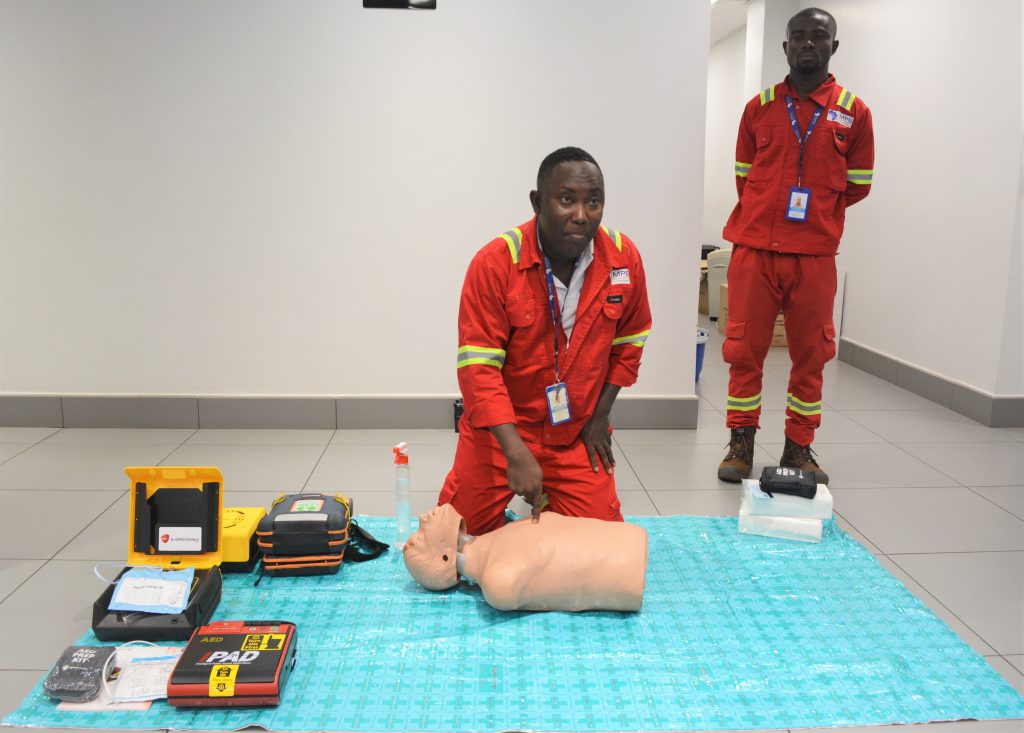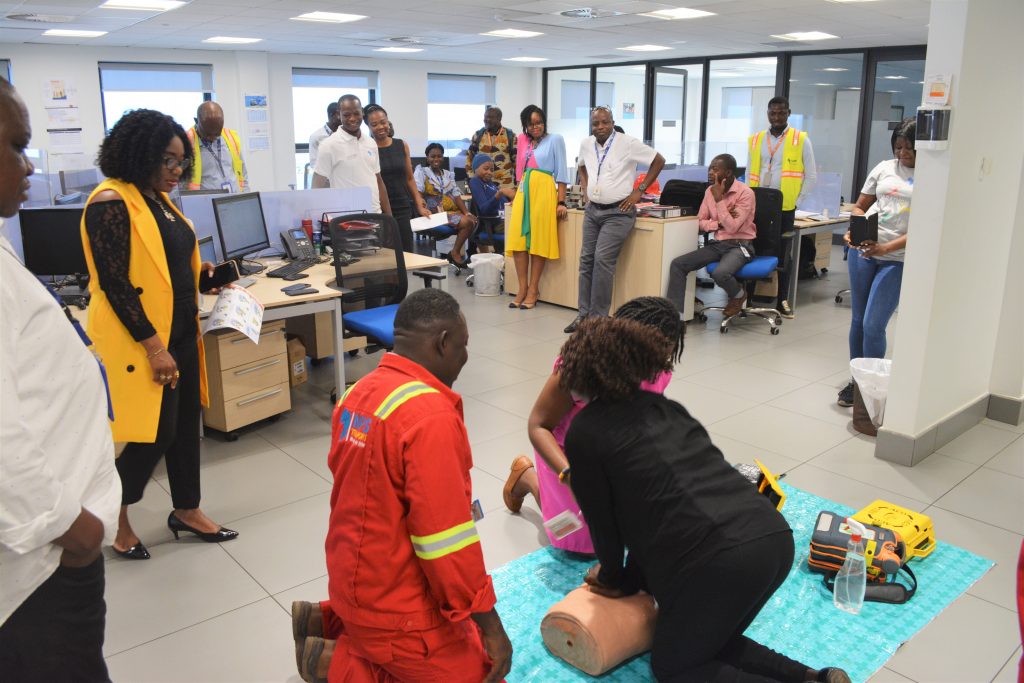The Quality Health Safety Security and Environment (QHSSE) Department of Meridian Port Services Ltd (MPS) has conducted an emergency awareness session on Resuscitation from a Cardiac Arrest to ensure readiness in the case of an emergency.
Leading the education, Adam Kabir, a Safety Supervisor enumerated and demonstrated the steps involved in the resuscitation of a person who has suffered a cardiac arrest using the Automated External Defibrillator (AED). The AED is a computerized device used to restart a heart that has stopped beating or is beating too quickly to create a pulse. Defibrillators work by shocking the heart back into action.
The routine emergency drills and awareness scheduled throughout the year is in line with the Company’s QHSSE Policy that commits to plan and prepare for effectively responding to potential emergencies and to provide necessary information, instruction, training, and supervision to staff and contractors to enable them to perform their task safely.


Steps in using an AED for resuscitation
Step 1: POWER ON the AED
The first step in operating an AED is to turn the power on. This initiates voice prompts, which guide the operator through subsequent steps. To turn the AED on, press a power switch or lift the monitor cover or screen to the “up” position.
Step 2: Attach electrode pads
Quickly open and attach the self-adhesive monitor-defibrillator electrode pads directly to the skin of the victim’s chest.
Step 3: Analyze the rhythm
Clear rescuers and bystanders from the victim and ensure that no one is touching the victim. To prevent artefactual errors, avoid all movement affecting the patient during rhythm analysis.
Step 4: Clear the victim and press the SHOCK button
Before pressing the SHOCK button, ensure that no one is touching the victim. Always loudly state a “Clear the patient” message, such as “I’m clear, you’re clear, everybody clear” or simply “Clear.”

Health Practitioners advise that it is important to be prepared for an emergency by learning about emergency protocols and first aid methods. This allows one to be able to respond quickly and appropriately in such situations.
The staff who participated in the awareness session described the activity as essential first aid knowledge for all.

No Comments